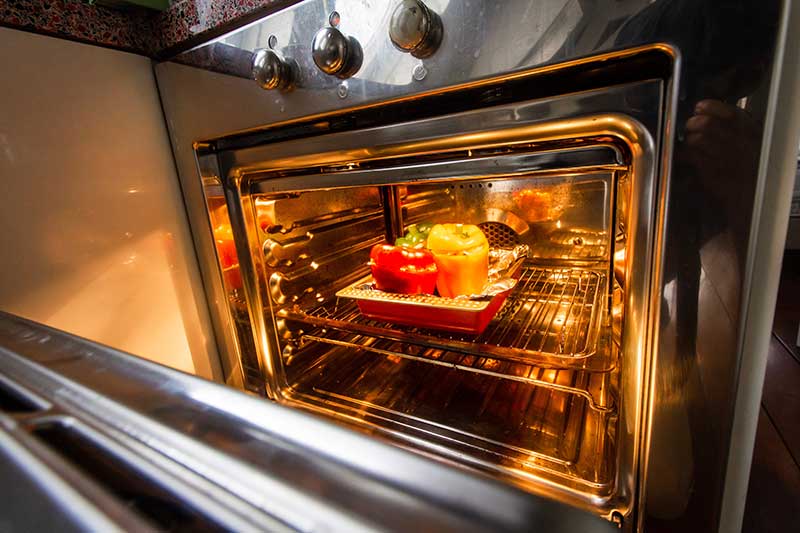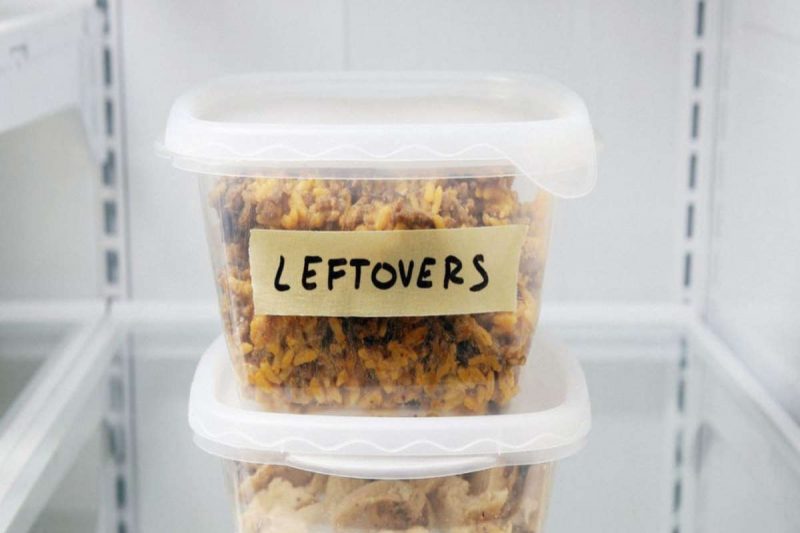Temperature of Reheated Food sets the stage for this enthralling narrative, offering readers a glimpse into a story that is rich in detail and brimming with originality from the outset. Embark on a culinary journey where food safety and delectable delights intertwine, as we explore the intricacies of reheating food to perfection.
Delving into the heart of this topic, we will uncover the potential health risks associated with reheating food and the crucial role of maintaining proper temperatures to ensure food safety. We will delve into the optimal temperature range for reheating various food types and the importance of reaching and maintaining internal temperatures for optimal results.
Food Safety Concerns
Reheating food can pose potential health risks if not handled properly. Understanding the risks and following safe reheating practices is crucial to prevent foodborne illnesses.
The “temperature danger zone” refers to temperatures between 40°F (4°C) and 140°F (60°C), where bacteria can multiply rapidly. Reheating food within this temperature range for extended periods allows bacteria to thrive and produce toxins that can cause food poisoning.
Safe Reheating Practices
To minimize bacterial growth and ensure food safety during reheating, follow these guidelines:
- Reheat food thoroughly to an internal temperature of 165°F (74°C) or higher to kill bacteria.
- Use a food thermometer to accurately measure the internal temperature.
- Stir or rotate food during reheating to ensure even heating.
- Reheat food only once and consume it promptly.
- Discard any leftover reheated food that has been left at room temperature for more than two hours.
Optimal Reheating Temperatures

Reheating food safely requires reaching and maintaining specific internal temperatures to eliminate harmful bacteria. This guide explores the ideal temperature range for various food types and emphasizes the importance of using food thermometers for accurate measurement.
Internal Temperature Ranges
To ensure food safety, reheat to the following internal temperatures:
- Poultry:165°F (74°C)
- Ground meat (beef, pork, lamb):160°F (71°C)
- Fish and seafood:145°F (63°C)
- Eggs and egg dishes:160°F (71°C)
- Leftovers:165°F (74°C)
- Soups and stews:165°F (74°C)
Importance of Internal Temperatures
Reaching and maintaining internal temperatures is crucial for several reasons:
- Eliminates bacteria:High temperatures kill harmful bacteria that can cause foodborne illnesses.
- Prevents recontamination:Maintaining internal temperatures above 140°F (60°C) prevents bacteria from multiplying.
- Ensures food safety:By following recommended temperatures, you can minimize the risk of consuming contaminated food.
Use of Food Thermometers
Food thermometers are essential for accurate temperature measurement:
- Instant-read thermometers:Measure temperature quickly and easily, ideal for thin foods like poultry.
- Dial thermometers:Provide continuous monitoring, suitable for large cuts of meat or liquids.
- Thermocouples:Advanced thermometers that provide real-time temperature readings, ideal for professional kitchens.
Reheating Methods

Reheating methods significantly impact food safety and quality. Choosing the appropriate method depends on the type of food, its quantity, and the desired texture and flavor.
Microwave Reheating
- Advantages:Quick, convenient, and energy-efficient.
- Disadvantages:Can create uneven heating, resulting in cold spots or overcooked areas. May alter the texture of some foods.
- Suitable for:Small portions, soups, sauces, and vegetables.
Oven Baking
- Advantages:Provides even heating and can restore the crispiness of foods. Retains moisture better than microwaving.
- Disadvantages:Takes longer than microwaving and requires preheating the oven.
- Suitable for:Larger portions, casseroles, pizzas, and baked goods.
Stovetop Reheating
- Advantages:Allows for precise temperature control and the ability to monitor the reheating process closely.
- Disadvantages:Can require constant stirring or monitoring to prevent burning.
- Suitable for:Sauces, soups, and dishes that benefit from a gradual temperature increase.
Food Quality and Taste: Temperature Of Reheated Food
Reheating food at the optimal temperature not only ensures food safety but also plays a crucial role in preserving its texture, flavor, and nutritional value. Understanding the effects of temperature on food quality can help you reheat meals effectively while maintaining their original characteristics.
Texture
- Overheating:Excessive heat can cause food to become tough, dry, or rubbery. For instance, overcooking a steak can result in a chewy texture instead of the desired tenderness.
- Underheating:Insufficient heat may leave food undercooked and compromise its texture. For example, undercooking a pizza can result in a soggy crust instead of a crispy one.
Flavor
- High temperatures:Intense heat can alter the flavor compounds in food, leading to a loss of delicate flavors or the development of burnt notes. For example, overheating a delicate fish can result in a loss of its subtle flavors.
- Low temperatures:While low temperatures generally preserve flavors better, reheating food at too low a temperature can result in a bland taste. For example, reheating a soup at a low temperature may not allow the flavors to fully develop.
Nutritional Value
- Vitamin loss:Heat can degrade certain vitamins, especially water-soluble vitamins like vitamin C. Overheating food can result in significant vitamin loss.
- Mineral retention:Minerals are generally more stable during reheating than vitamins. However, excessive heat can still cause some mineral loss, especially if the food is boiled or steamed.
Preserving Food Quality
- Use gentle reheating methods:Microwave ovens and stovetops can heat food quickly, but they may also lead to uneven heating and overcooking. Consider using gentler methods like reheating in the oven or using a slow cooker.
- Cover food:Covering food while reheating helps retain moisture and prevents it from drying out. This is especially important for meats and poultry.
- Add moisture:If food is dry, add a small amount of liquid, such as broth or water, to help restore moisture and prevent it from becoming tough.
Enhancing Taste and Appearance
- Add seasonings:Reheating food is an opportunity to enhance its flavor by adding additional seasonings or spices. For example, adding a squeeze of lemon juice to reheated fish can brighten its flavor.
- Garnish with fresh herbs:Fresh herbs can add a pop of color and freshness to reheated dishes. For example, garnishing a reheated pasta dish with fresh basil or parsley can enhance its presentation and flavor.
- Use high-quality ingredients:The quality of the original ingredients will impact the taste and texture of the reheated food. Using high-quality ingredients will result in a better-tasting and more satisfying meal.
Special Considerations

Reheating leftovers, frozen meals, and takeout food requires special attention to ensure food safety and optimal quality. Proper storage and handling are crucial to prevent foodborne illnesses and maintain the nutritional value of the food.
Reheating Leftovers
Leftovers should be stored in airtight containers in the refrigerator within two hours of cooking. When reheating, ensure the food reaches an internal temperature of 165°F (74°C) to eliminate potential bacteria. Avoid reheating leftovers more than once to prevent food spoilage.
Reheating Frozen Meals
Frozen meals should be thawed in the refrigerator overnight or in the microwave using the defrost setting. Once thawed, reheat the food to an internal temperature of 165°F (74°C). Check the manufacturer’s instructions for specific reheating guidelines.
Reheating Takeout Food
Takeout food should be reheated immediately upon arrival. Remove the food from the original container and place it in a microwave-safe or oven-safe dish. Reheat to an internal temperature of 165°F (74°C) and discard any remaining food after consumption.
Food Safety for Specific Dietary Needs
Individuals with compromised immune systems or dietary restrictions should take extra precautions when reheating food. Pregnant women, young children, and the elderly are particularly vulnerable to foodborne illnesses.
- Pregnant women should reheat food to an internal temperature of 165°F (74°C) to prevent the risk of listeria infection.
- Young children and the elderly should consume reheated food within two hours of preparation to minimize the risk of bacterial growth.
- Individuals with compromised immune systems should reheat food to an internal temperature of 165°F (74°C) and avoid consuming leftovers.
Table: Reheating Temperatures for Common Food Types
To ensure food safety and preserve optimal quality, it is crucial to reheat food to the appropriate internal temperature. This table provides a comprehensive guide to safe reheating temperatures and recommended methods for various common food types.
Note that these temperatures are minimum internal temperatures and may vary slightly depending on the specific food item and reheating method used.
Reheating Temperatures for Common Food Types
| Food Type | Safe Internal Temperature | Reheating Method | Additional Notes |
|---|---|---|---|
| Beef, Pork, Lamb | 145°F (63°C) | Oven, stovetop, microwave | Use a meat thermometer to ensure the internal temperature is reached. |
| Poultry (chicken, turkey) | 165°F (74°C) | Oven, stovetop, microwave | Poultry should be cooked to an internal temperature of 165°F (74°C) to kill harmful bacteria. |
| Seafood (fish, shellfish) | 145°F (63°C) | Oven, stovetop, microwave | Seafood should be cooked to an internal temperature of 145°F (63°C) to kill harmful bacteria and parasites. |
| Vegetables | 165°F (74°C) | Oven, stovetop, microwave | Vegetables should be reheated to an internal temperature of 165°F (74°C) to ensure they are cooked through and safe to eat. |
| Grains (rice, pasta) | 165°F (74°C) | Oven, stovetop, microwave | Grains should be reheated to an internal temperature of 165°F (74°C) to prevent the growth of bacteria. |
Infographic
Reheating food safely is crucial to prevent foodborne illnesses. This infographic provides a visual summary of the key safety considerations for reheating food, including dos and don’ts, to ensure your food is safe to consume.
By following these guidelines, you can enjoy reheated meals without compromising your health.
Dos, Temperature of reheated food
- Reheat food to an internal temperature of 165°F (74°C) or higher to kill harmful bacteria.
- Use a food thermometer to accurately measure the internal temperature.
- Reheat food evenly throughout, stirring or rotating it during the reheating process.
- Cover food during reheating to prevent splattering and contamination.
- Discard any leftovers that have been reheated more than once.
Don’ts
- Don’t reheat food in its original packaging, as it may contain harmful chemicals that can leach into the food.
- Don’t microwave food on high power for extended periods, as it can create cold spots where bacteria can survive.
- Don’t reheat food that has been left out at room temperature for more than two hours.
li>Don’t reheat food that has an off odor or appearance.
Popular Questions
What is the temperature danger zone for food?
The temperature danger zone for food is between 40°F and 140°F (4°C and 60°C). In this temperature range, bacteria can grow rapidly and multiply, potentially causing foodborne illness.
How long can I safely reheat food?
Reheat food to an internal temperature of 165°F (74°C) or higher within 2 hours of cooking. If food has been left out at room temperature for longer than 2 hours, it should be discarded.
What is the best way to reheat food?
The best way to reheat food is to use an oven or stovetop. Microwaves can be used to reheat food quickly, but it is important to stir the food halfway through the reheating process to ensure even heating.
